Download PDF
Download page Ensemble Extract Editor.
Ensemble Extract Editor
Every input for a model alternative whose source has been specified as “Extract List” in the Model Linking Editor appears in the Extract Editor as “Required Input”. Additionally, each input is identified by the model alternative and forecast run that requires it. If the same alternative is used in multiple forecast runs and they are all identified as coming from the Extract List, then the same pathname will appear in the Extract Editor and those pathnames will be compressed to just one pathname if the “hide duplicate pathnames” list option is on. This implies that for any input (HEC-DSS pathname) needed for a given model alternative, only one source can provide that input. However, since a given model alternative can be used in either a standard forecast run or an ensemble forecast run (or both), an option was added to separately identify the (extracted) input for the standard forecast run(s) from the input for the ensemble forecast run(s). Additionally for the ensemble forecast run(s), you can identify the (extracted) input source as either a single time series or an ensemble.
To support the ability to separate the input for a standard forecast run from the input for an ensemble forecast run, the Required Input HEC-DSS pathname must be separately identifiable for each forecast run type. The italic typeface is applied to all Extract List input required by an alternative used in an ensemble forecast run. This capability allows the record to not be hidden as a “duplicate” and allows the user to associate an ensemble data set or a single time-series dataset to the pathname.
The below figure shows an Ensemble Forecast Run (ResSim-Ensemble) created to show the application of ensemble streamflow forecasts as inputs to a HEC-ResSim model alternative. Ensemble streamflow forecasts are produced by the National Weather Service (NWS) Hydrologic Ensemble Forecast Service (HEFS). The ensemble computing capability can, however, be used with data that comes from other sources.
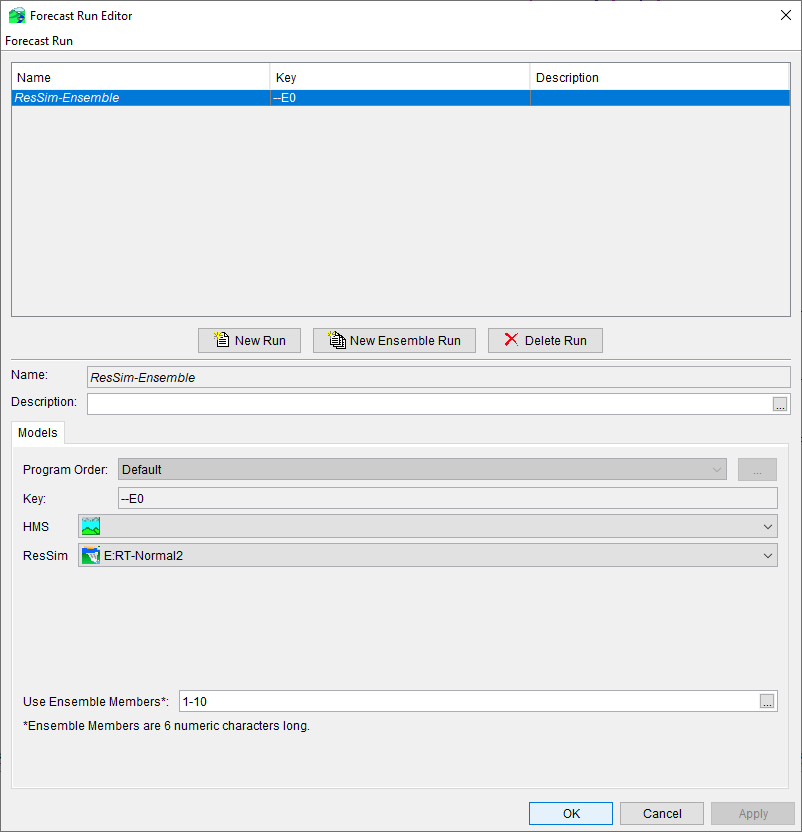
The HEC-ResSim alternative shown in the figure is named “RT-Normal2” and ensemble members 1-10 of the collection are used in the compute.
Model Linking Editor
The figure below shows the Model Linking Editor for ResSim-Ensemble Forecast Run.
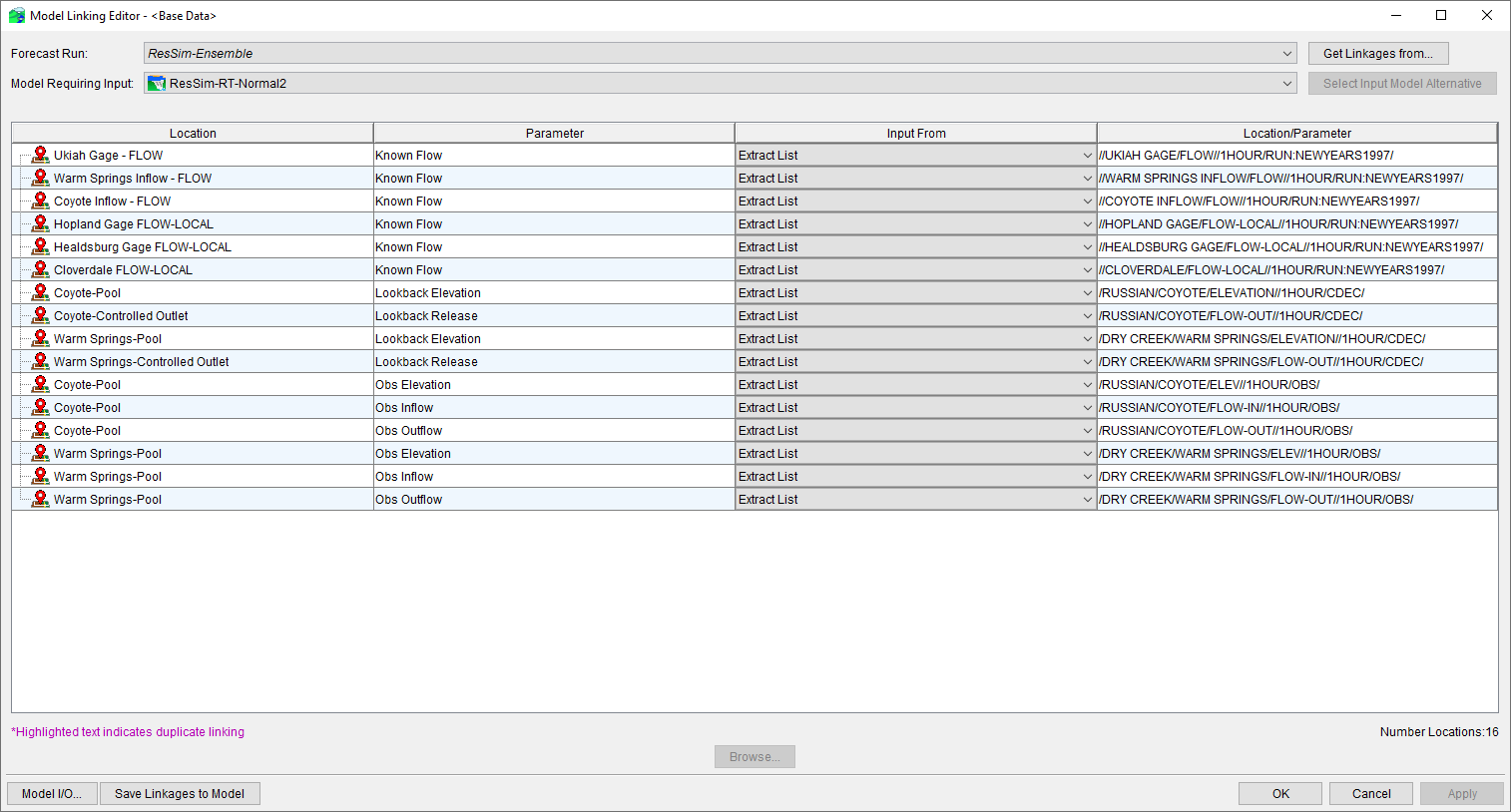
The source for every input is specified as “Extract List”. These pathnames will appear in the Extract Editor for the HEC-ResSim model alternative in the Required Input section for the ResSim-Ensemble Forecast Run as seen in the figure below. The pathnames are italic since the Forecast Run is set as an ensemble Forecast Run.
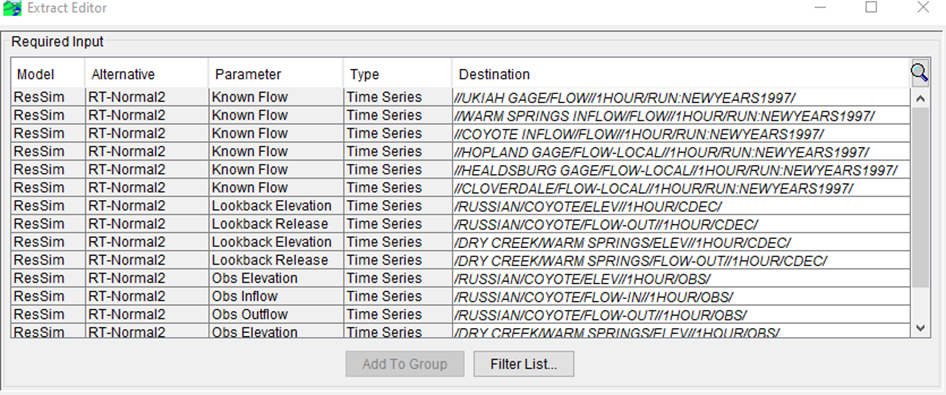
Extract Editor
Like deterministic forecast runs, required input data must be added into an Extract Group within the Extract Editor. As seen in the figure below, the Ensemble Inflows group was created, and all the boundary conditions highlighted in the Required Input table were added to this group.
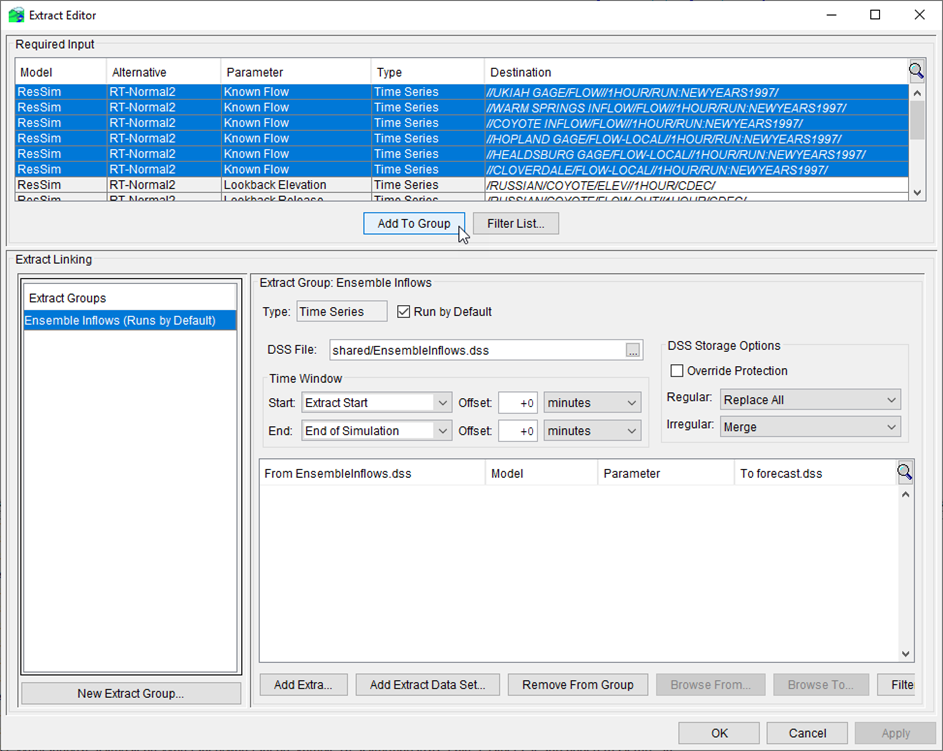
The next step is to map a required input to a specific collection. Double-click on the first cell of the row that you want to associate with a collection. An eclipse button will appear on the right corner of the cell as seen in the figure below.
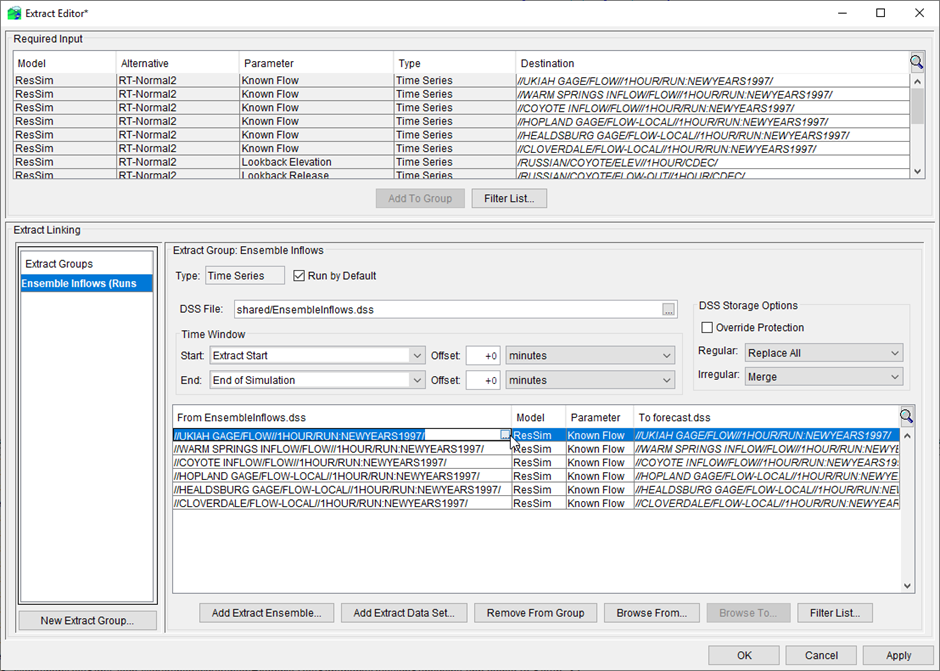
Click on the eclipse button, and the source HEC-DSS file will open.
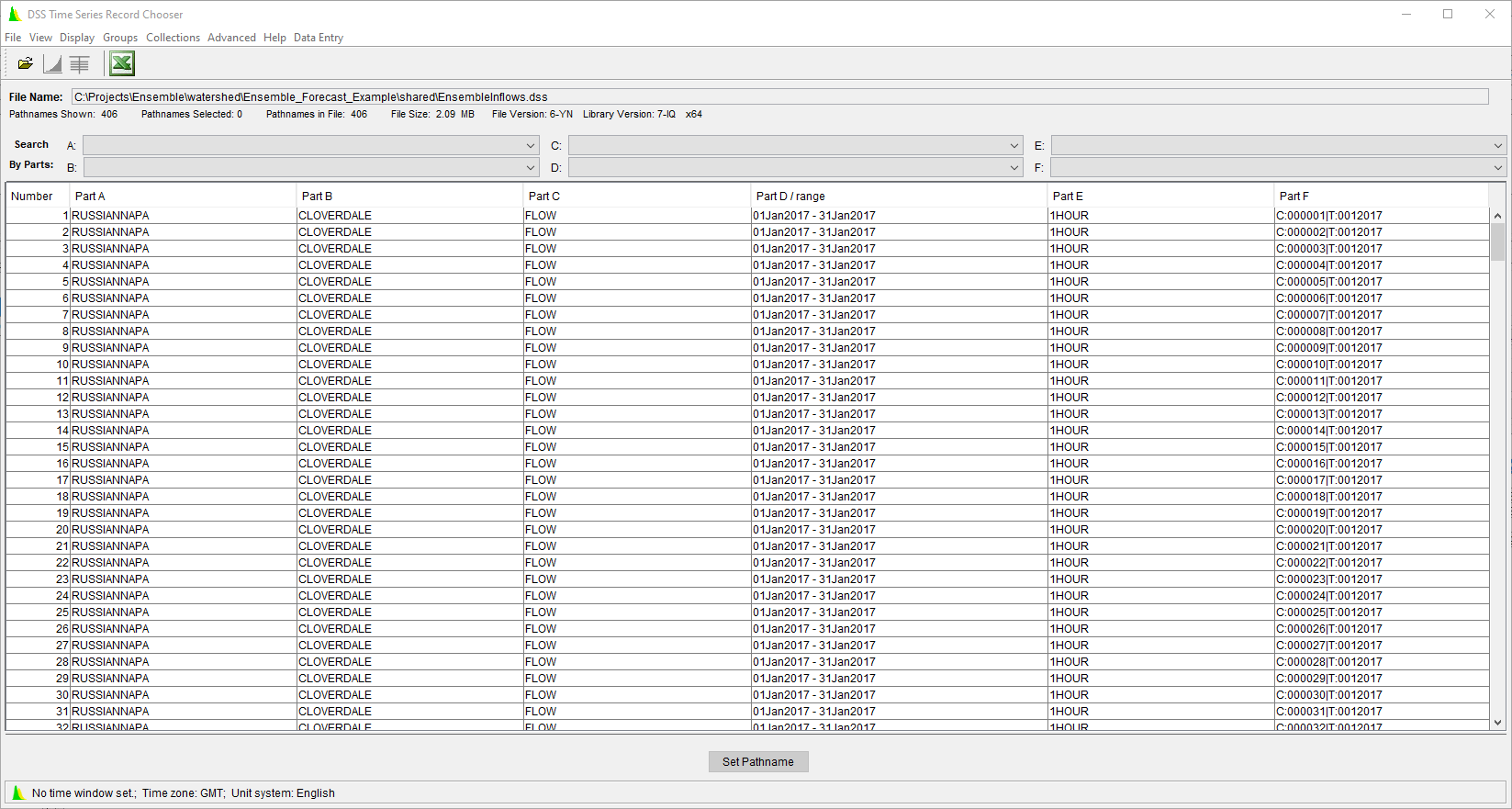
Select Condensed – Group Collections from the View menu. The collection member pathnames will condense as illustrated in the figure below.
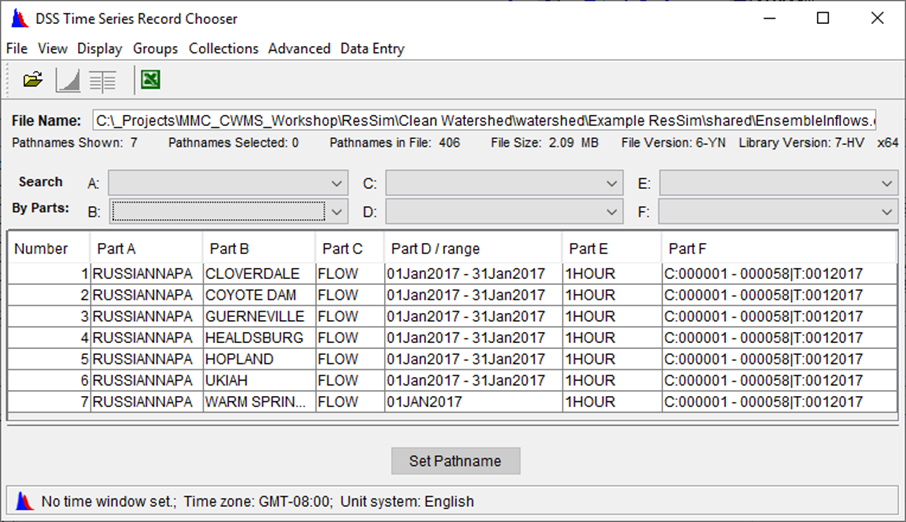
Move the DSS Time Series Record Chooser window so that you can see both it and the Extract Editor at the same time. In the DSS Time Series Record Chooser window, find and highlight the collection you want to associate with the selected boundary condition row. Click the Set Pathname button or double-click the highlighted pathname. The pathname of the first member of the selected collection will appear in the selected row of the Extract Editor as seen in the figure below.
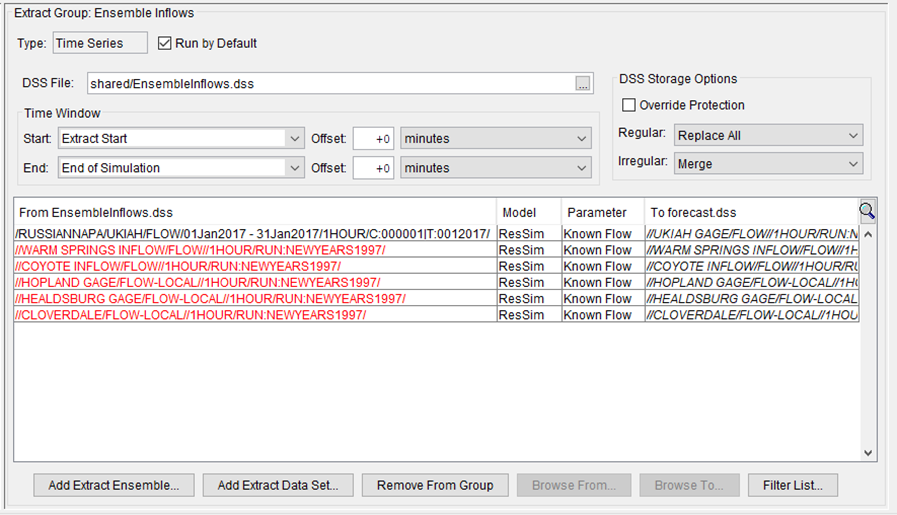
Repeat these steps for each boundary condition that should be mapped to a collection. When finished, close the DSS time Series Record Chooser window and click OK in the Extract Editor.
In this example, because the observed and lookback data are stored in separate HEC-DSS files, a new extract group will be created to extract these data as seen in the figure below.
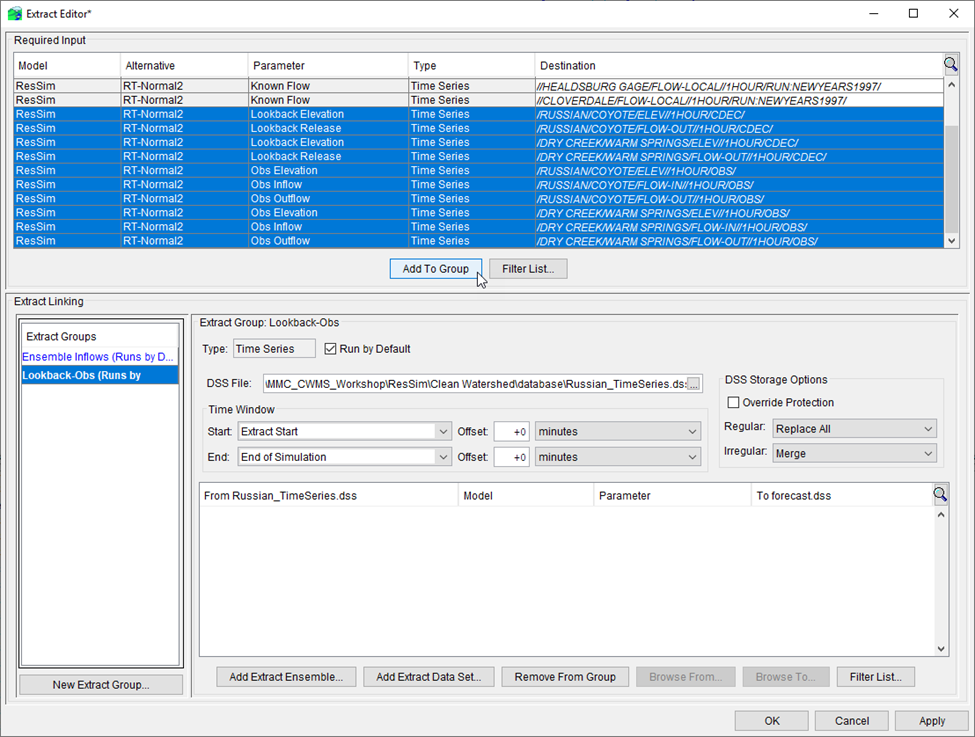
Ensure the data is mapped correctly for lookback and observed data for each location.
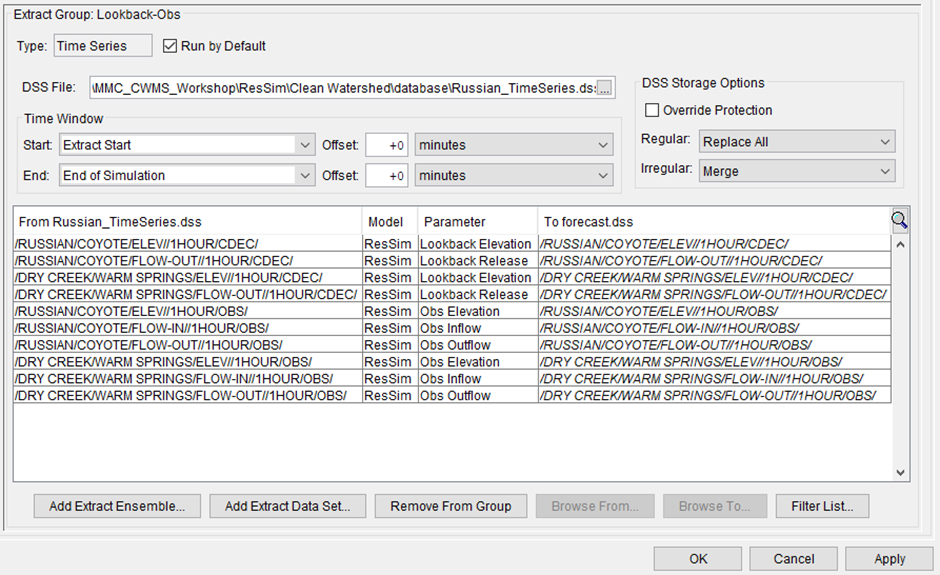
Once all edits have been made, click OK in the Extract Editor and move to the Modeling tab to create a forecast.